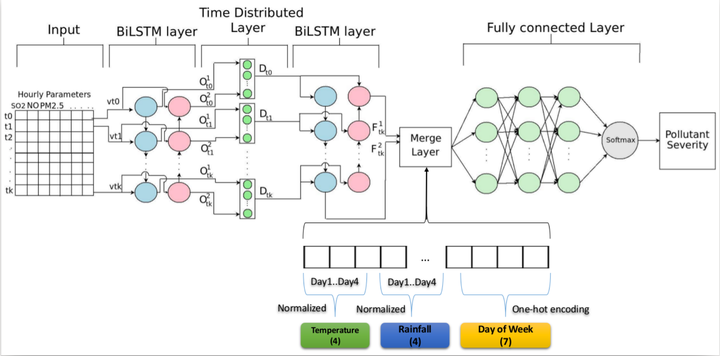Air Pollutant Severity Prediction Using Bi-Directional LSTM Network
 Model Architecture
Model Architecture
Abstract
Air pollution has emerged as a universal concern across the globe affecting human health. This increasing danger motivates the study of systems for predicting air pollutant severities ahead of time. In this paper, we have proposed the use of a bi-directional LSTM model to predict air pollutant severity levels ahead of time. We have shown that the predictions can be significantly improved using an ensemble of three Bi-Directional LSTMs (BiLSTM) that model the long-term, short-term and immediate effects of PM2.5 (the key air pollutant) severity levels. Further, weather information data has been taken into account while modelling, since they are found to boost prediction accuracies. Experimental results for multiple locations in New Delhi, India are presented to demonstrate model superiority over earlier techniques.